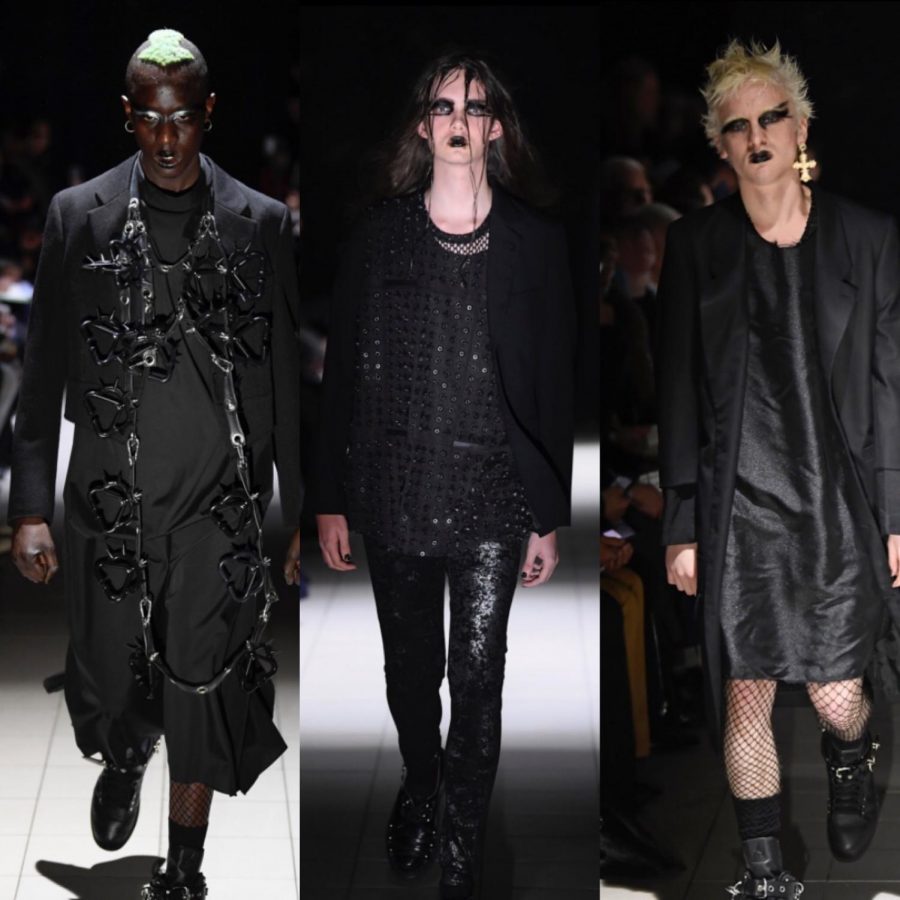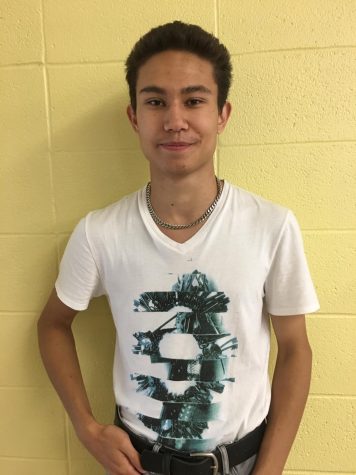An Overview of Comme Des Garçons Homme Plus Fall 2019
January 25, 2019
The concept of subversive beauty was brought to the forefront yet again at Rei Kawakubo’s menswear collection for Comme Des Garçons Homme Plus at Paris Men’s Fashion Week 2019. The high-concept, ultra-radical fashion designer displayed a collection of darkly colored clothes and paraphernalia that exquisitely embodies the aura and ethos of the punk- goth youth subcultures of the 1980s. Models defiantly walked on the runway with inky black lips and harnesses strapped to their crotches, connoting extreme messages of adolescent insurgency and rebellion.
While anarchy and disruption surged in the streets of Paris for the tenth consecutive Saturday, where violent protests against economic policies instituted by the French government transpired in the heart of the city, Kawakubo tapped into this current contentious political climate to illustrate a fully formed vision based on social defiance and disobedience. The clothing at Kawakubo’s show was presented in a manner that felt like it was purposefully corrupted; almost all pieces were deliberately torn up or distressed. Kawakubo’s fall collection showed itself to be the direct antithesis to the precedent set by high fashion at the moment.
Instead of presenting warmly colored, droopy tailored clothes, like other notable menswear collections at Paris Fashion Week, Kawakubo opted to display models with garments that had fringly cut edges as well as latex and netting. There was an aspect of androgyny that firmly made its way into the show— dresses and black nail polish were worn by the models. The collection, quite intuitively, counterbalanced this feminine exterior with the inclusion of bold, black Air Jordan 1 sneakers, which were also designed by Kawakubo. The show also featured a live performance by the electronic music duo, Vowws, the group playing loud, bass-heavy grooves that perfectly corresponded with the goth-punk aesthetic that the clothes and models exhibited. This creative decision was ultimately intended to evoke a sense of uncomfortability and uneasiness among attendees. All of the stylistic choices for this fall collection were derived from Kawakubo’s previously established beliefs to constantly reject the status quo with regard to how clothing is intended to be worn and challenge the standards of beauty in contemporary society.
This notion of presenting clothes and models in a way that is subversive to existing beauty ideals isn’t an entirely new concept for the fashion world, as it is the exact spirit that established designers from the anti-fashion movement explored in the 1990s, such as Alexander McQueen, Maison Margiela, and Raf Simons. This philosophy of disavowing societal constructs was first formally adopted by Rei Kawakubo in the early formation of Comme Des Garçons in 1973, when she began to present womenswear that primarily centered around a female’s intellect and strength rather than her perceived elegance.
Instead of showing clothes simply as they are, Kawakubo has made a reputation for herself as a designer who displays outfits that are more akin to avant-garde sculptures rather than practical clothes. Kawakubo reimagines and contextualizes traditional attire in a way that is wildly inventive, thematic, and cerebral. Her negligence of all trends and rules of clothing enables her to create entirely original, restructured silhouettes that are both modernist and forward thinking. Kawakubo has always been a maverick and pioneer of the fashion industry, allowing her audience to deliberately open up their minds and think outside the box.
For 2019’s Comme Des Garçons Homme Plus Fall menswear collection, Kawakubo believed that it was of utmost importance to address today’s tumultuous global political atmosphere by bringing sentiments of youth suppression to the limelight in Paris. Social disobedience and the discovery of beauty in the darkness were both common themes of this Comme show that hadn’t been entirely explored at a fashion show since the early 2000s. Although the collection attempted to reference goth punk youth movements of the 1980s, the atramentous clothes presented at this CDG Homme Plus Fall collection felt like a direct reflection to the darkness and turbulent nature of contemporary politics and culture. Despite the fact that this rebellious youth faction has subsided long ago, this attitude and delivery illustrated by Kawakubo feel startlingly profound and relevant.

















































































































































